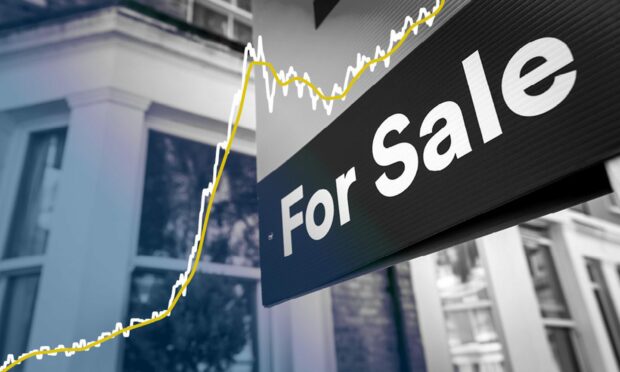Looking to buy a property in Dundee? Or perhaps you are waiting for the right moment to sell in Angus or Perth and Kinross?
We have created a data tracker to help you navigate the market across Tayside, Fife and Stirling.
Whether you are a first-time buyer wishing to know what prices to expect in the area or if you are already a property owner looking for a change, the housing market can be daunting.
The average price of a property differs depending on the area you’re looking at but also fluctuates monthly.
To help our readers track average house prices across Tayside, Fife or Stirling, we’ve put together a regularly updated tracker.
Our interactive charts and maps will be refreshed when new data becomes available.
Monitoring average house prices in Tayside and Fife
To keep up to date with the housing market our tracker provides the latest information on property prices across Dundee, Angus, Perth and Kinross, Fife and Stirling.
Our house price tracker uses data from the UK House Price Index (HPI) which is published monthly.
The HPI uses house sales data from across the UK, including the Registers of Scotland, to track the ebbs and flows of house prices.
The below chart shows how average house prices have changed since 2015 across our area.
Stirling and Perth and Kinross have climbed past the £200,000 mark in the past decade. But the averages for those two council areas exceed the overall average price across Scotland also shown on the chart.
What about first-time buyers?
Entering the property market for the first time can be overwhelming – and an entirely different playing field than if you have previous buying experience.
So how much can you expect to spend? While first time buyer average prices are lower than those of the whole market, they have been steadily increasing since 2015.
While first time buyers in 2015 or even March 2018 would on average spend around £96,000 on a Dundee property, a decade later and average prices have moved firmly into six figures.
But before you can buy, the first hurdle is the deposit. How much would you need to fork out to afford a home at the average price?
Our just for fun chart below shows how many average bottles of Irn Bru you’d have to forgo to be able to afford a 10% deposit, based on your area.
The kind of numbers involved in house buying can be scary and hard to visualise. Our aim with this chart is to help our readers contextualise the data.
Our analysis is based on the latest available average house price in each area, a 10% deposit and a 500ml bottle of Scotland’s other national drink costing £1.40.
How many homes are being sold in Scotland?
The type of home you are aiming for will also have an impact on what you can expect to pay.
Data from the HPI also provides a breakdown of house prices by Scottish local authority and by property type.
That includes detached, semi-detached and terraced houses, as well as flats and maisonettes. Use the dropdown menu to explore your desired area.
But the average prices will also depend on how many homes are being sold.
So how many sales are happening across Dundee, Angus, Perth and Kinross, Stirling and Fife each month?
The HPI also provides information on sales volumes, or the number of properties sold within a month.
Most of the properties sold in each of the areas are existing properties, with new builds accounting for a smaller portion of the total sales.
Select your area to explore the peak and troughs of the chart for insight into when more properties are being sold.
In most areas, the volume of property sales dips around the start of the year but there are regional differences.
The DC Thomson data team aim to make data more accessible to our communities. If you have any feedback or suggestions of future projects you can get in touch with us at datateam@dctmedia.co.uk
Meet the data team

